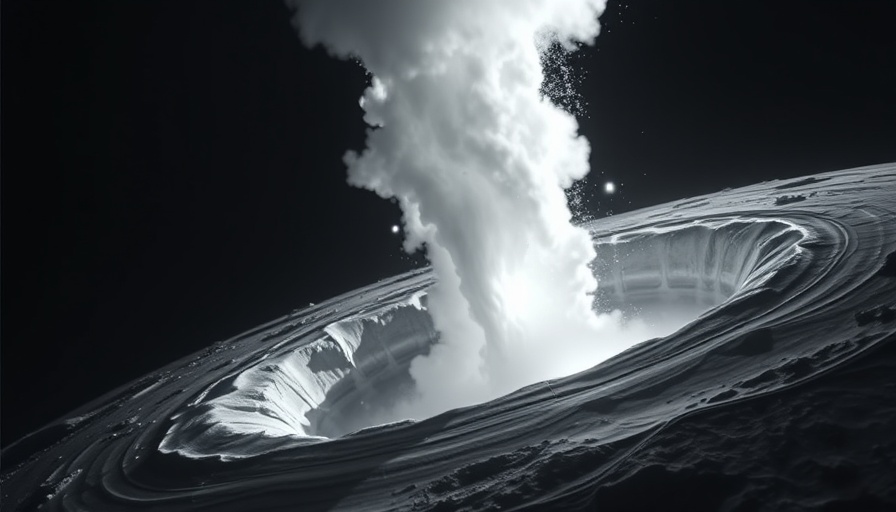
Unraveling Enceladus: New Insights into Geyser Origins
Saturn's moon Enceladus has captivated scientists and space enthusiasts alike since its geysers were first spotted by NASA's Cassini spacecraft in 2005. Long viewed as a potential habitat for extraterrestrial life, recent studies have challenged the notion that the moon’s plumes originate from a vast subterranean ocean. Instead, researchers at Dartmouth College propose that these impressive jets could arise from melted surface ice, thus rethinking the moon’s hydrological dynamics.
Understanding the Geysers: A Shift in Perspective
Previously, the prevailing theory was that liquid water from a hidden ocean beneath Enceladus’s icy crust was escaping through fractures. However, the Dartmouth team scrutinized the physical mechanisms governing these geysers, concluding that the intricate structure of Enceladus's ice shell complicates the direct connection to an underground ocean. The researchers noted two significant technical hurdles: the substantial thickness of the ice, which makes it improbable for a crack to reach the ocean, and the unclear pathways through which water could travel upward, even if such cracks existed.
The Role of Shear Heating in Geysers' Formation
Interestingly, the researchers suggested a different origin for the geysers. They hypothesized that shear heating—frictional heat generated as icy layers grind against each other—could be creating a "mushy zone" rich in salty water near the surface. This process aligns with findings from NASA's Jet Propulsion Laboratory, which emphasized the effect of friction and tidal forces in driving superficial geological activity. By incorporating salt into the ice matrix, the melting point of the ice decreases, enabling a slushy aggregation of partially melted ice to supply the geysers with liquid.
Evidence Supporting the Geyser Model
The researchers detail how the unique geological features surrounding the tiger stripes—cracks and ridges—lend credence to their newly proposed model. When water from this quasi-liquid mush freezes and then re-melts due to cyclical heating, it can expand and cause the ice to fracture, resulting in the spectacular geysers we observe. This idea mirrors geological observations from Earth's ice sheets, where similar processes have been recorded.
Revisiting Astrobiological Implications
The implications of this new model are profound. If Enceladus’s geysers are indeed sourced from localized melting rather than a deep ocean, it diminishes the moon’s potential to harbor life as we understand it. While the presence of salty liquid water is still a positive indicator for microbial life, the disappearance of a deep ocean calls into question the long-term viability of biological ecosystems on Enceladus. The habitat characteristics may have shifted from being oceanic to an icy, slushy environment.
Moving Forward: What This Means for Future Exploration
As we stand on the brink of further explorative missions to Enceladus, this newfound perspective on its geysers could guide scientists in designing experiments and selecting landing sites for future robotic missions. Understanding Enceladus's geology in greater depth is essential for unlocking the mysteries surrounding this icy moon.
In conclusion, while the origins of Enceladus's geysers remain a captivating area of study, the shifting theories underscore the complexity of celestial bodies. Continued research will not only enrich our understanding of Enceladus but also bolster our comprehension of similar icy worlds across our solar system and beyond.
 Add Row
Add Row  Add
Add 




Write A Comment